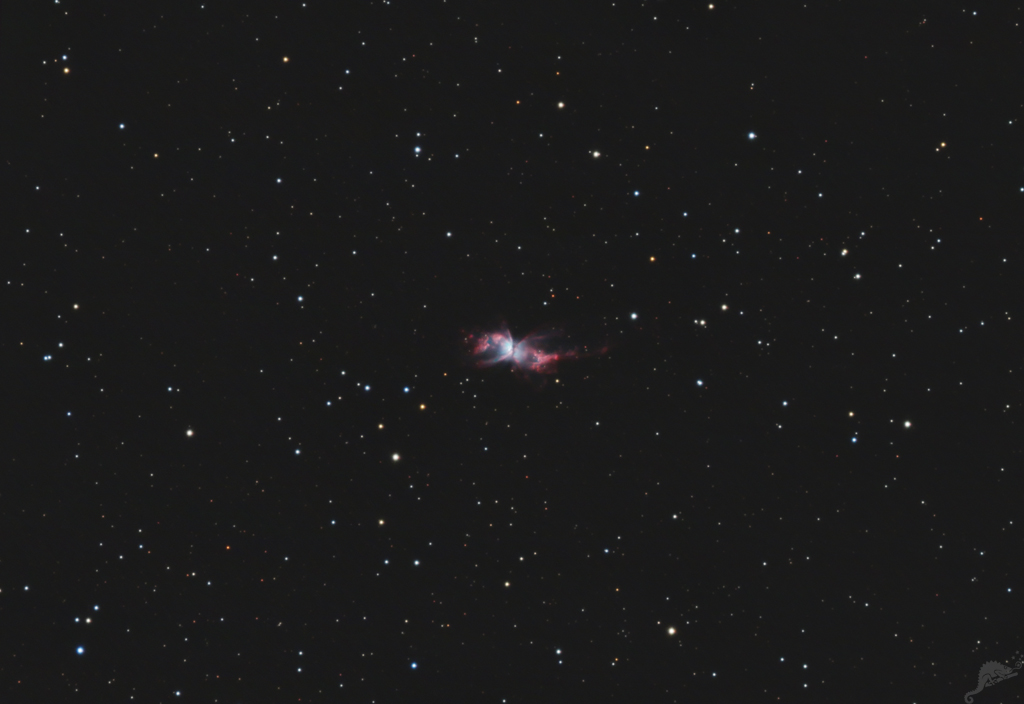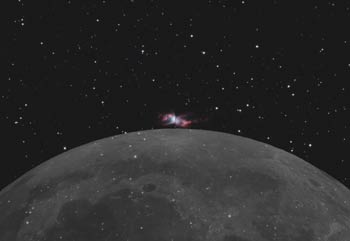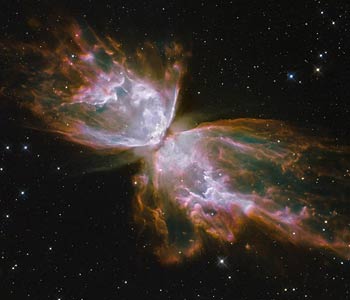 |
CHAMÄLEON + ONJALA OBSERVATORY DeepSky | SITEMAP HOME CHAMÄLEON |
|
 |
|||
| « back to overview Nebulae | Load higher resolution (1800 x 1200 Pixel 3000 x 2000 Pixel) | Object description |

 |
Object description: NGC 6302 is a bipolar planetary nebula in the constellation Scorpio. About 130 bipolar planetary nebulae are known in our Milky Way at the moment. Because of its appearance, it also wears the more common names Bug or Butterfly Nebula. NGC 6302 stands at a distance of approx. 3,800 light years from our solar system with an apparent size in the sky of only 120 x 85 arc seconds. It was discovered by the Scottish astronomer J. Dunlop in June 1826. « Click here or the thumbnail image for a comparison with the size of the Moon |
The star - HD 155 520 - originally had about 5 solar masses, of which now about 4.4 solar masses are in the nebula. The star itself is not visible in the visual spectral band, it is hidden behind the dark, dusty and disc-shaped structure perpendicular to the "butterfly". In other spectral bands the star itself can be observed and the investigations show that it now only has a mass of about 0.64 solar masses. With a temperature of about 400,000 degrees Celsius it is one of the hottest stars in our galaxy. The resulting extremely strong UV radiation ionizes the atoms of the nebula and, depending on the chemical elements, makes them glow in different colours.
| The
gas masses of the "butterfly" are with very hot (about 30,000 degrees Celsius)
compared to other bipolar planetary nebulae and move with the extremely high
speed of about 1 million kilometres per hour away from the star. With this
speed, the distance between Earth and Moon will be covered in 24
minutes. Based on these values, the ejection of the gas masses began only 2,200 years ago, the dark dust torus is much older with about 6,000 years. NGC 6302 is one of the most complex and one of the youngest planetary nebulae in the Milky Way. Its size is about 2 light years, which is half the distance between the Sun and the nearest fix star alpha Centauri. The first scientific investigations were carried out by E. E. Barnard in the year 1907. In 2009, NGC 6302 was photographed in very high resolution by the Hubble Space Telescope in various narrow spectral bands and combined to the adjacent colour image. |
 |
 |
 |
 |
 |
 |
 |
 |
| Sun | Moon | Solar System | DeepSky | Widefield | Miscellaneous | Spec. Projects |